Every brand should have a set of solid brand guidelines. These guidelines are a set of rules (specific to your brand) to follow to create and maintain a unified brand identity across your business.
A clear set of brand guidelines will contain everything related to your business’s brand identity and brand assets, along with instructions on how to apply them in different scenarios.
Why use Brand Guidelines?
Guidelines serve as a solid framework for departments across a business. They bring together designers, marketers, developers and so on, enabling each department to produce work reflecting the brand identity and values. They ensure all messages put out by a business are relevant to a brand’s values and goals. Cohesion is critical to building clear brand values across different platforms and countries.
A brand with consistent messaging eventually gains more trust over time. Employees should have easy access to the guidelines as this reduces the risk of confusion and creating any material that does not align with a business’ values. Some major international companies choose to publish their brand guidelines online, whereas smaller companies distribute theirs internally.
What Goes Into a Brand Guideline?
The content within a brand guideline differs from business to business. However, they all tend to follow the same form. Some businesses choose to include more standards compared to others.
First thing’s first…
Details about the brand
This section focuses on any key information regarding your business’ history and mission. It should also convey the type of personality that the business takes on – along with summing up any key values that your business prides itself upon.
Include examples of ‘tone of voice’ within this section. This will help copywriters and marketers when it comes to composing content such as blog posts and copy for advertisements.
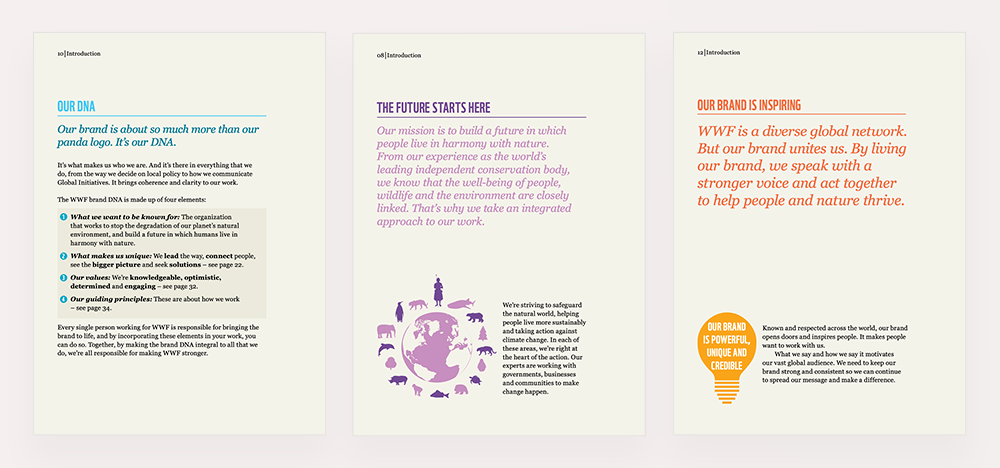
^ World Wildlife Fund (WWF) starts off their brand guide with a few pages about their brand values and mission. This helps anyone unfamiliar with their brand to get a quick overview of what WWF stands for.
Logo Usage
Anything to do with logos should go here. Examples of the logos your business has and when they should be applied, e.g. using your logo mark for social media profile pictures. Also include any relevant information to do with minimum sizes, spacing, and logo treatments to avoid (e.g. don’t use the logo on a photo background’).
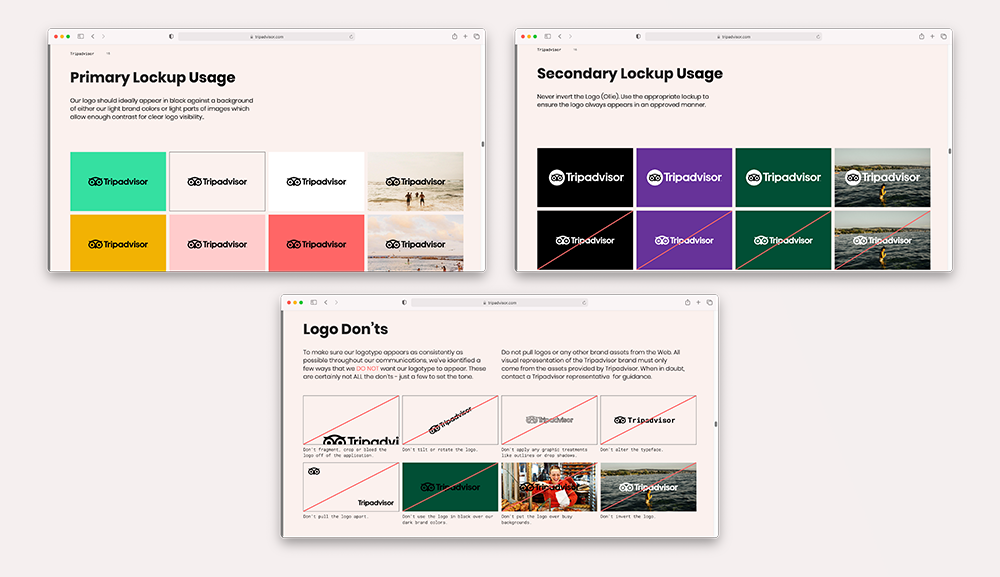
^ Trip Advisor helpfully outlines all acceptable and unacceptable uses of their logos within their brand guidelines.
Colour Palette
Your colour palette section should show any primary and secondary colour palettes. A business might have different colour palettes depending on the use, these should be clearly communicated within the guidelines. For example, there might be one colour palette for use within the logo, another for any web design/content, and another for any printed content.
Tip: Make sure to include the RGB or HEX codes for the colours you chose to use within your brand. These codes are all the information you need to find a specific shade/tint of colour for use and are compatible across most digital software.
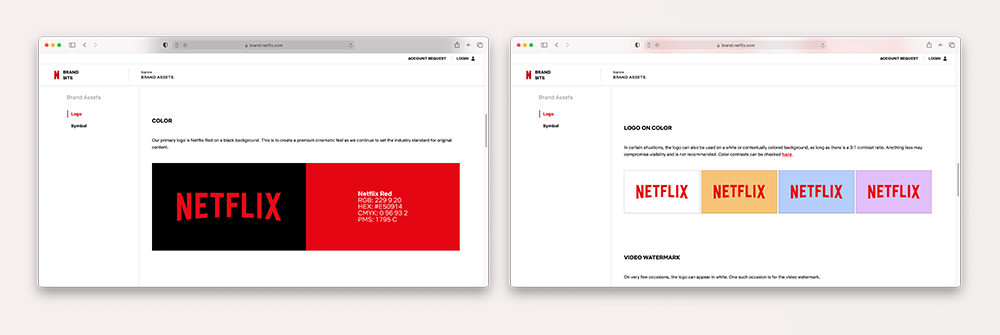
^ Netflix covers the use of colour within their brand guide. They provide the RGB and HEX codes for their brand colours, along with setting standards as to what contrasted colours the logo can be placed over.
Typography
Another key element of your visual branding is typography. This doesn’t just appear within your logo but also across any content your business puts out containing any text.
The typography section of your brand guideline specifies which fonts and sizes to use within your logo. This includes UX copy, blogs and articles, and any printed material. Defining these standards helps to keep your branding visually consistent – and therefore garners more brand value and trust.
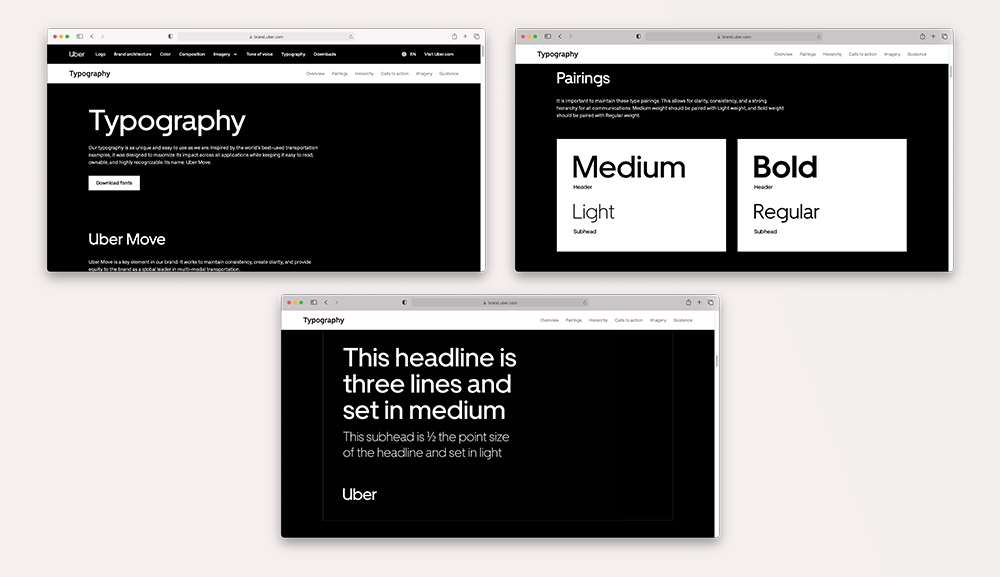
^ Uber provides an extensive guide as to which typefaces (and how) they should be used. They even go as far to set how many lines a headline can take up.
Image Style
In this section, you should include any examples of image style that you want all your visual assets to follow. Whether this is specifying a style of photography (i.e black and white) or the content within the photos (i.e more photographs of nature rather than urban settings).
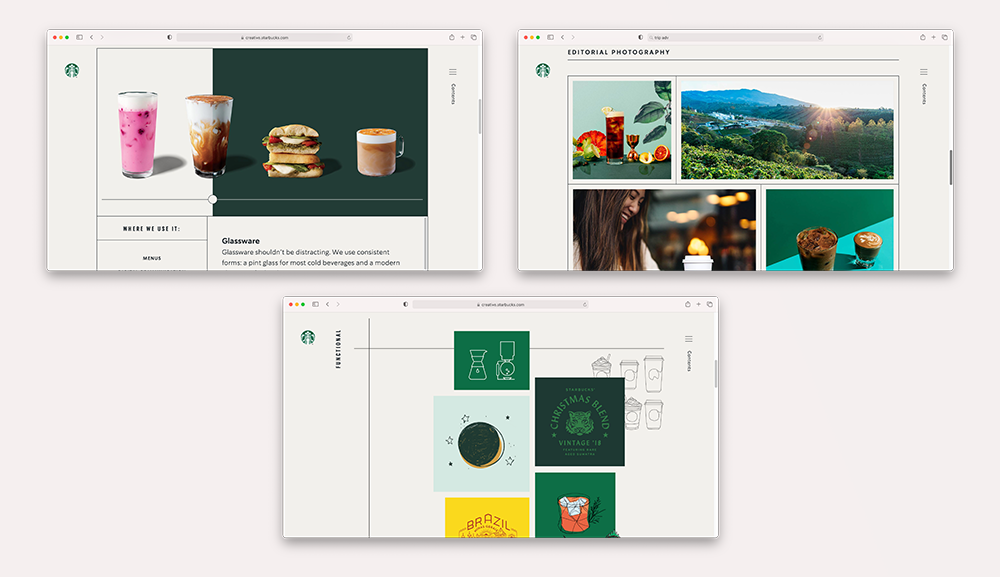
^ Starbucks has a detailed section within their brand guidelines which sets out what styles of photographs and illustrations can be used. They even provide guidance as to what type of glasses should be used when photographing beverages.
And there you have it. Those are the basic sections that any brand guidelines should follow. However, businesses often feel inclined to set standards for more detailed aspects of branding. The more rules and standards that you set, the tighter your brand image is going to be.
Additional sections to include in your Brand Guideline:
Layouts and grids:
Specifying where text and imagery should appear within digital and printed content.
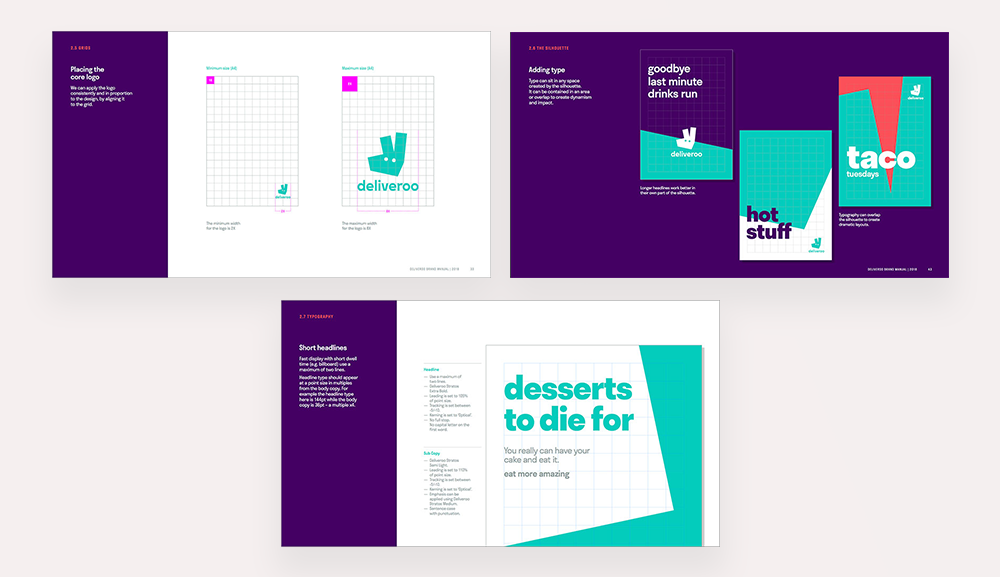
^ Deliveroo set out their expectations for the way text and logos should be placed within branded content.
Signage specifications:
How big should your signage for your business premises be?

^ The NHS provide comprehensive detail as to how signage within their premises should look.
Merchandising applications:
What types of merchandising can your company brand appear on? Are there any things that can’t feature your branding?
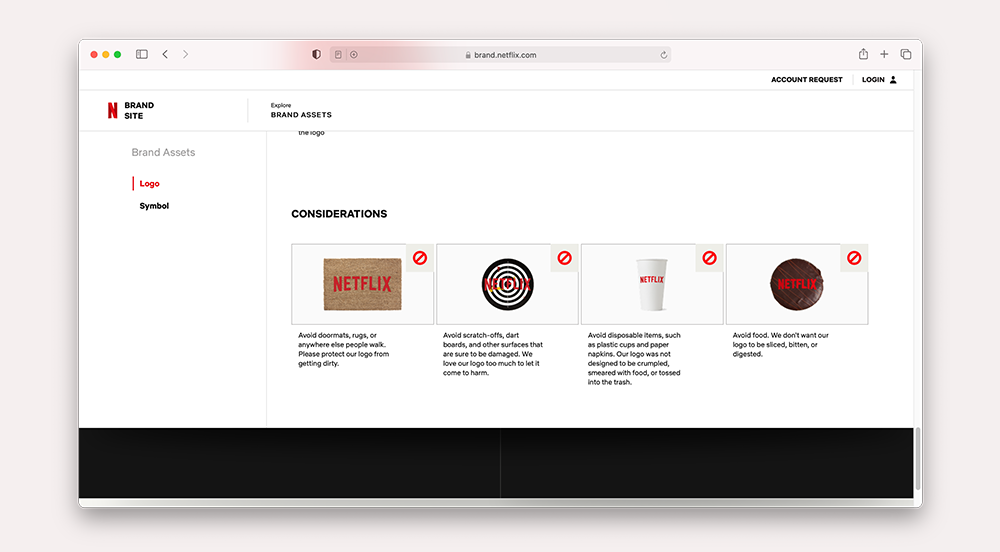
^ Netflix make sure to stipulate the products and merchandise that their logo can’t appear on.
Overall, brand guidelines should be flexible to allow creativity within a brand. However, they still need to be firm enough to keep your brand consistent and easily recognisable. Consistency is especially important, even more so when it comes to multinational businesses and spread across multiple platforms.
Want to work with us to create more than just guidelines? Start your branding project with our experts here at Supremo. Simply fill out our project planner or get in touch with Ellie below.
